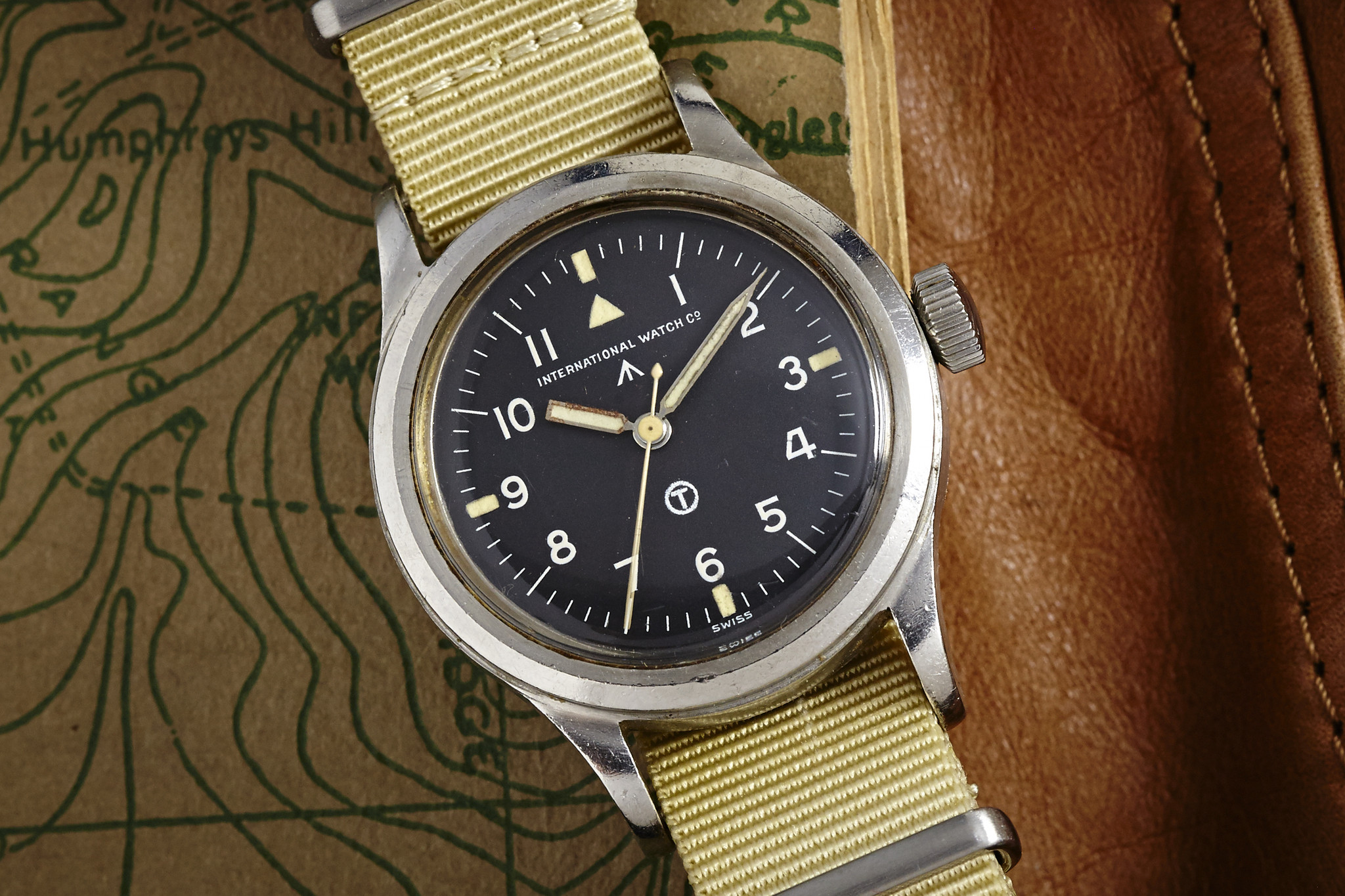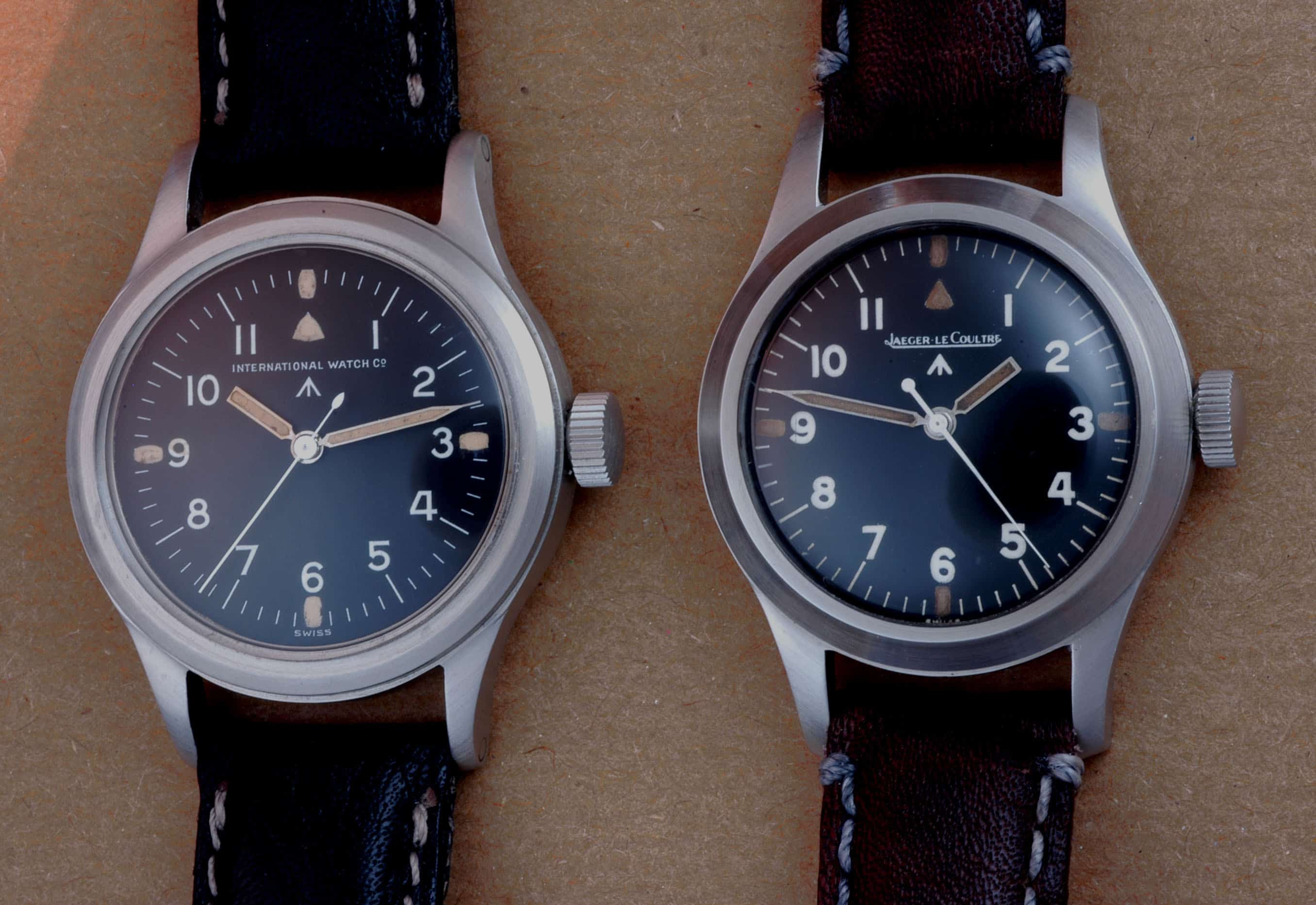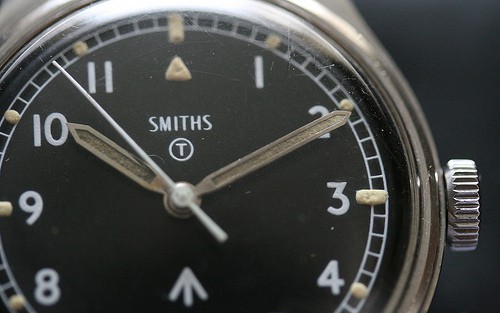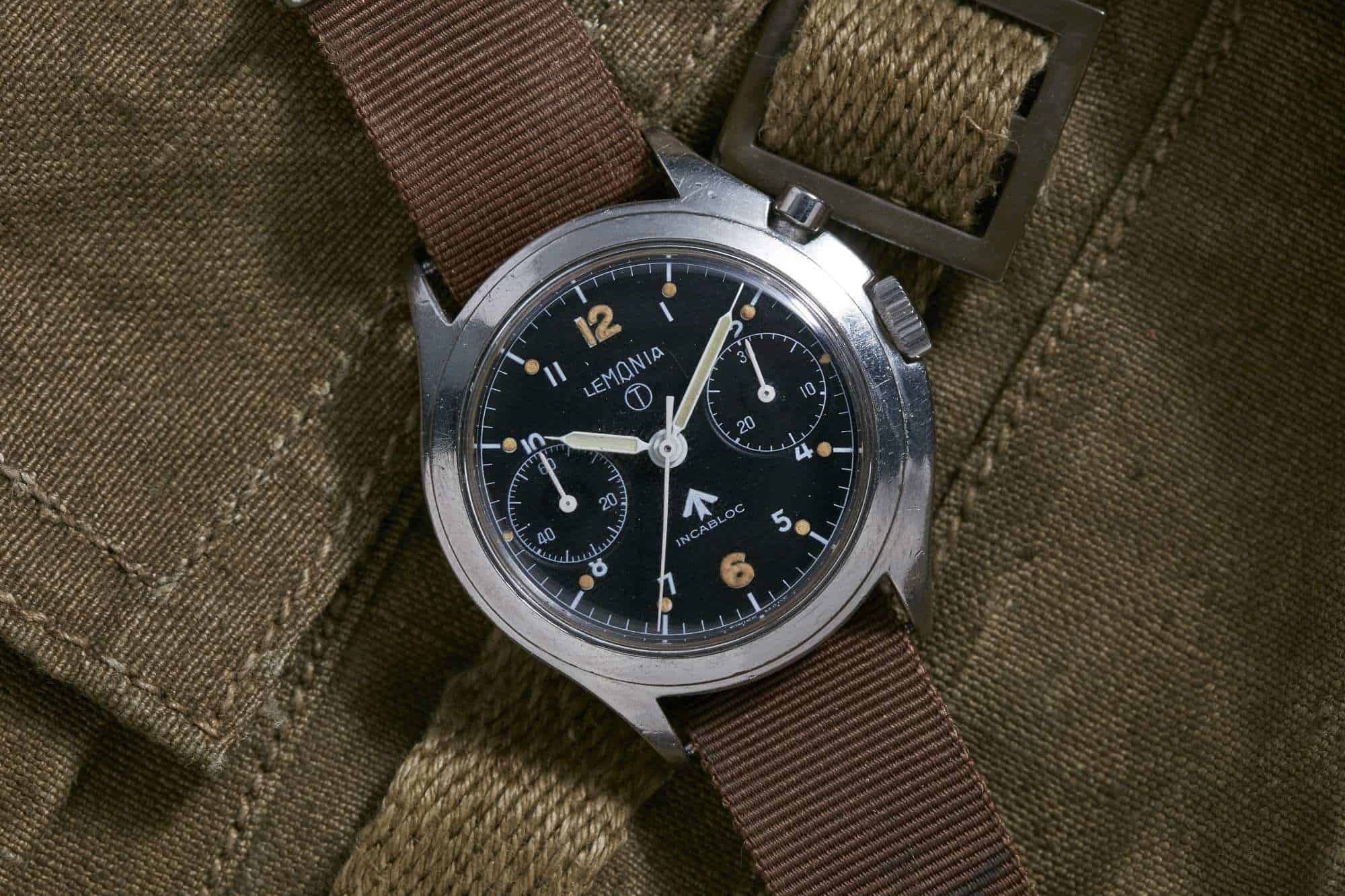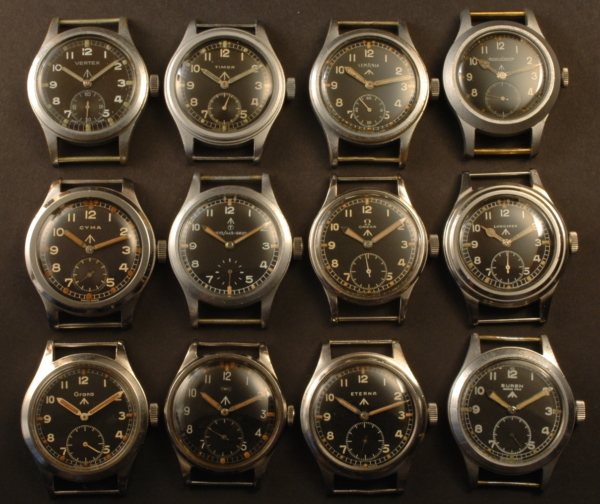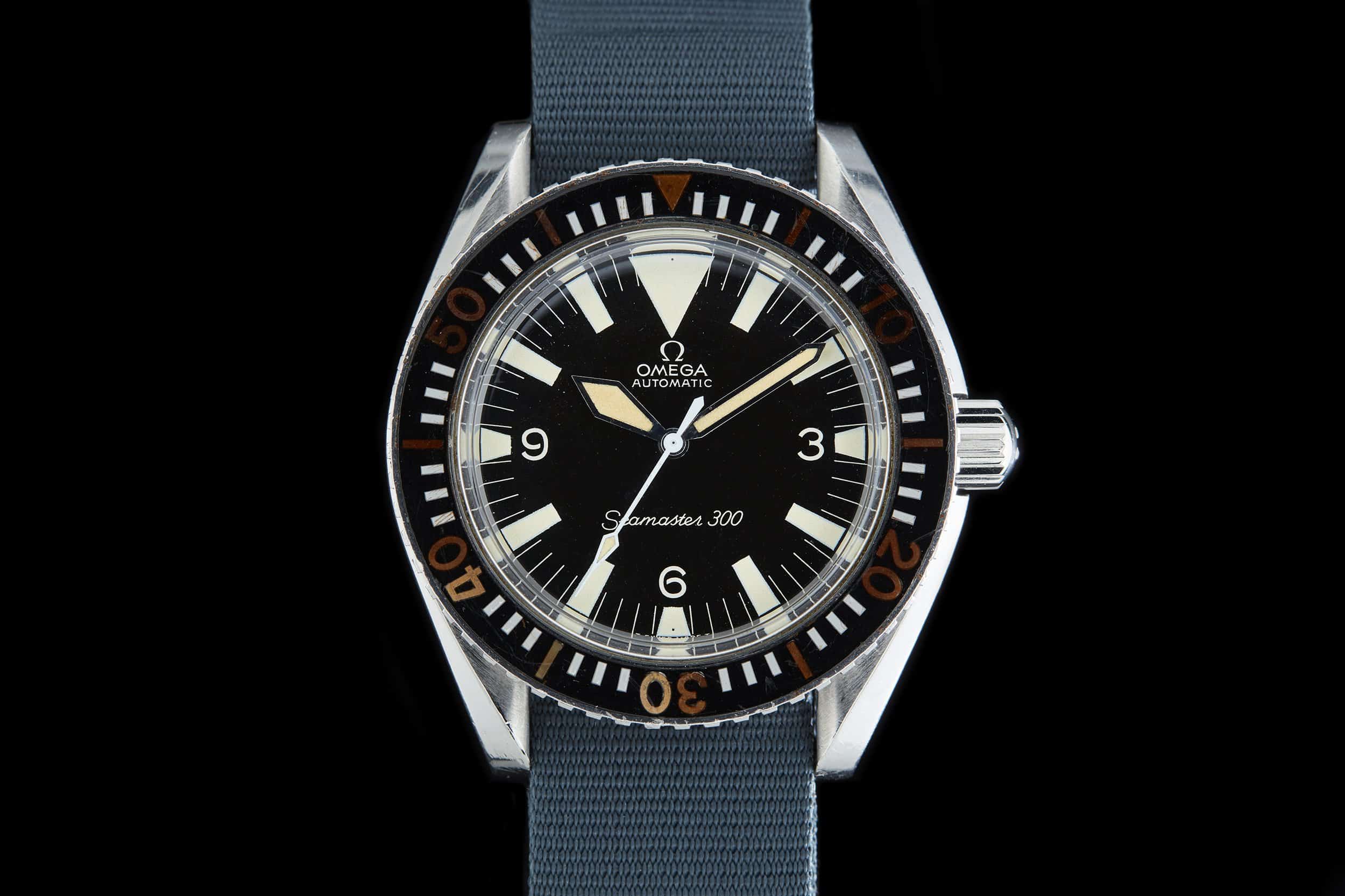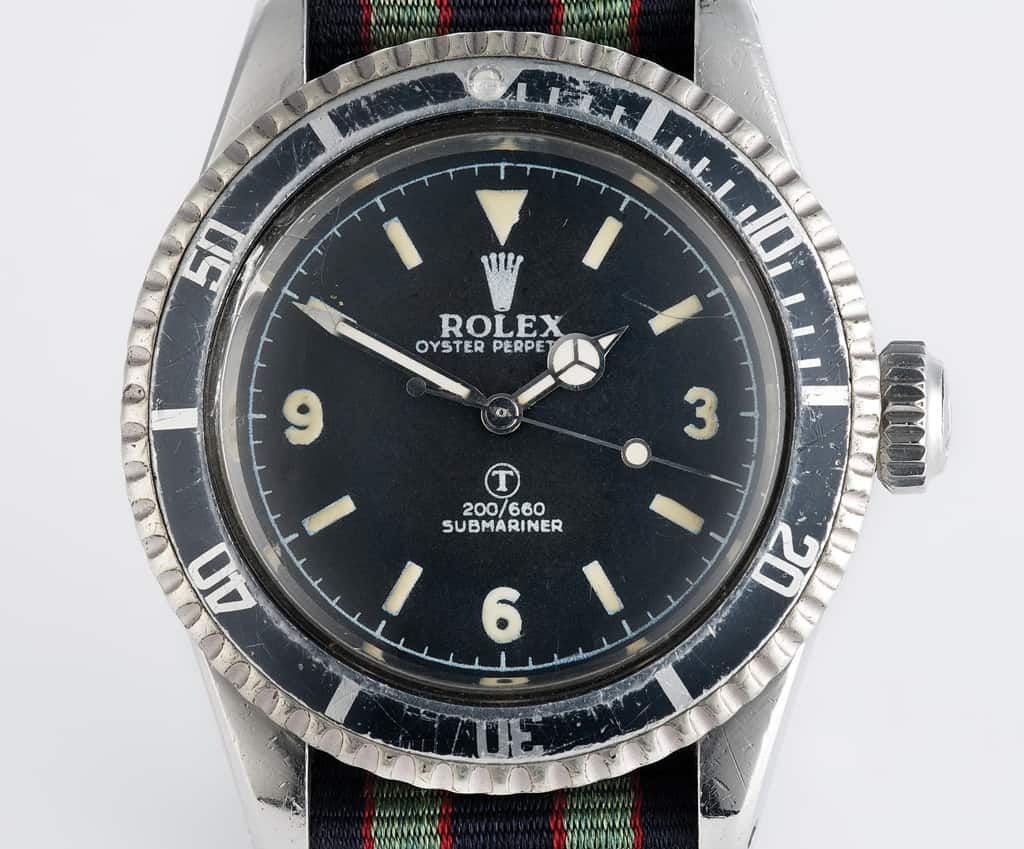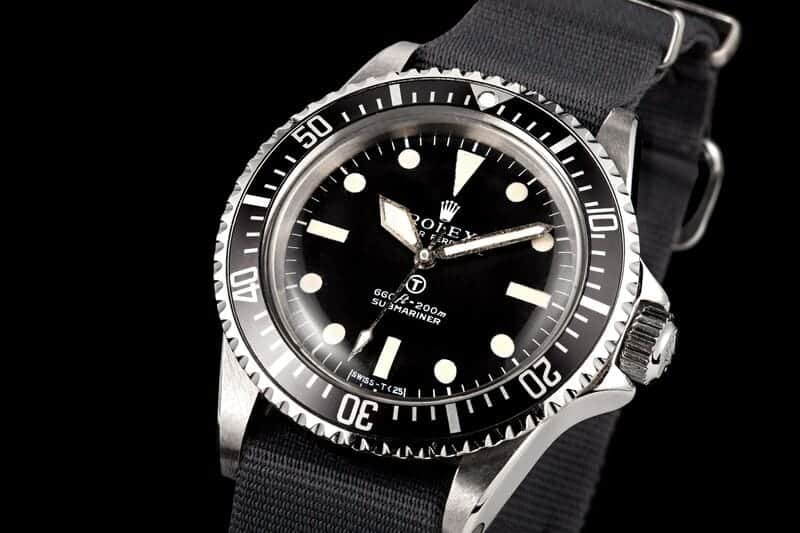In Part 2 of the British installment of our series, Military Watches of the World, we are going to examine the wristwatches issued to HM’s forces from the post-WWII period through the Vietnam War era.
Korean War Era
One of the most iconic of perhaps all issued military watches is the 6B/346, commonly referred to as the Mk. 11 and produced by Jaeger LeCoultre and International Watch Company. This spec was designed in the immediate aftermath of the War as a new, highly accurate navigation watch for issue to pilots by the MoD, and was in use from 1948 through 1981—quite a run for an issued timepiece.
These watches had stainless steel cases measuring 35-36 millimeters with long lugs and (generally) fixed strap bars, antimagnetic Faraday cages, and matte black iron dials. The dials have Arabic numerals from one to 12 (later, the 12 became a triangle) and minute markings in white, with the exception of the cardinal, lumed graduations at three, six, and nine. Movements were specified to be central-second, 12-ligne Swiss calibers with 36-hour power reserves and a daily rate variation of no more than +/- 4 seconds. Cases were expected to be waterproof to 20 feet and acrylic crystals were held together via a retaining screw to prevent detachment during decompression. Early versions featured radium lume, with later versions featuring tritium denoted with a circle “T” on the dial.
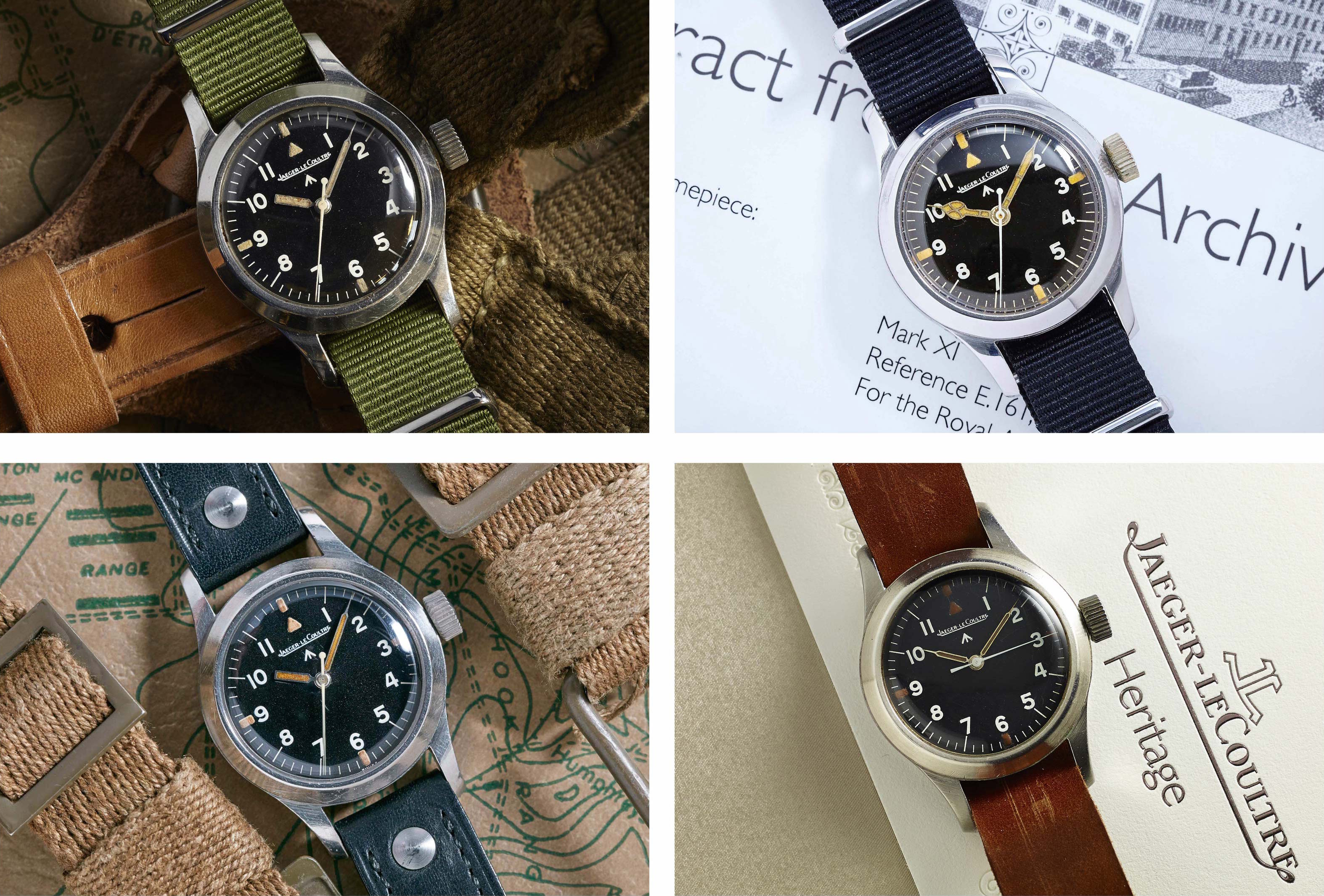
Both versions of the Mk. 11 were eventually issued to the RAF, FAA (Fleet Air Arm), RAAF (Royal Australian Air Force), RNZAF (Royal New Zealand Air Force), and several other units. The JLC variants utilized the Cal. 488/SBr, which was a chronometer-grade movement that later saw use as the basis of the 1958 JLC Chronométre Geophysique. The IWC variants utilized the famous Cal. 89, widely lauded as one of the best three-hander movements produced by any Swiss firm, and it was subsequently used in numerous civilian dress watches. The JLC version was eventually discontinued in 1953 and later decommissioned due to its inadequate shock protection, and IWC, realizing that their original Cal. 89s were returning often for service for the same reason, subsequently updated their newer 89s with Incabloc shock protection. These IWCs were finally decommissioned in 1981. For a comprehensive article on the Mk. 11, check out our past coverage here.









 Featured Videos
Featured Videos




